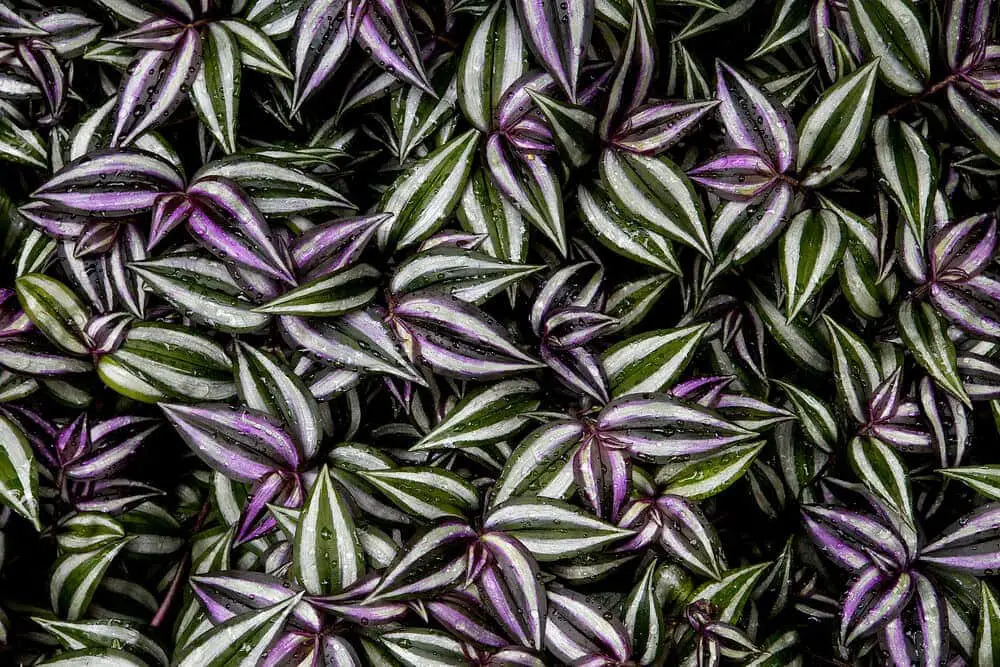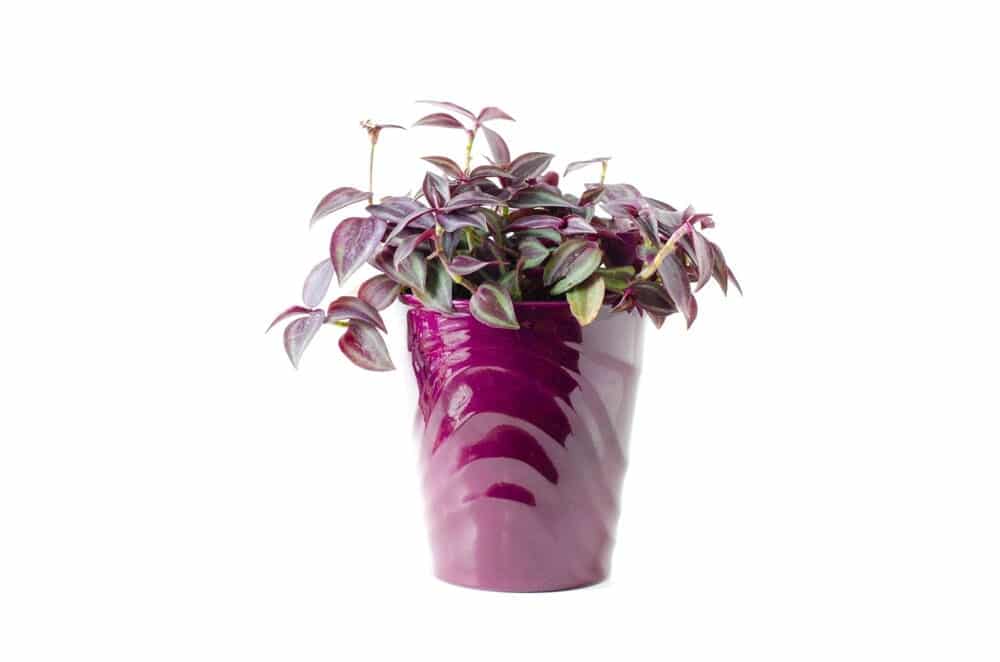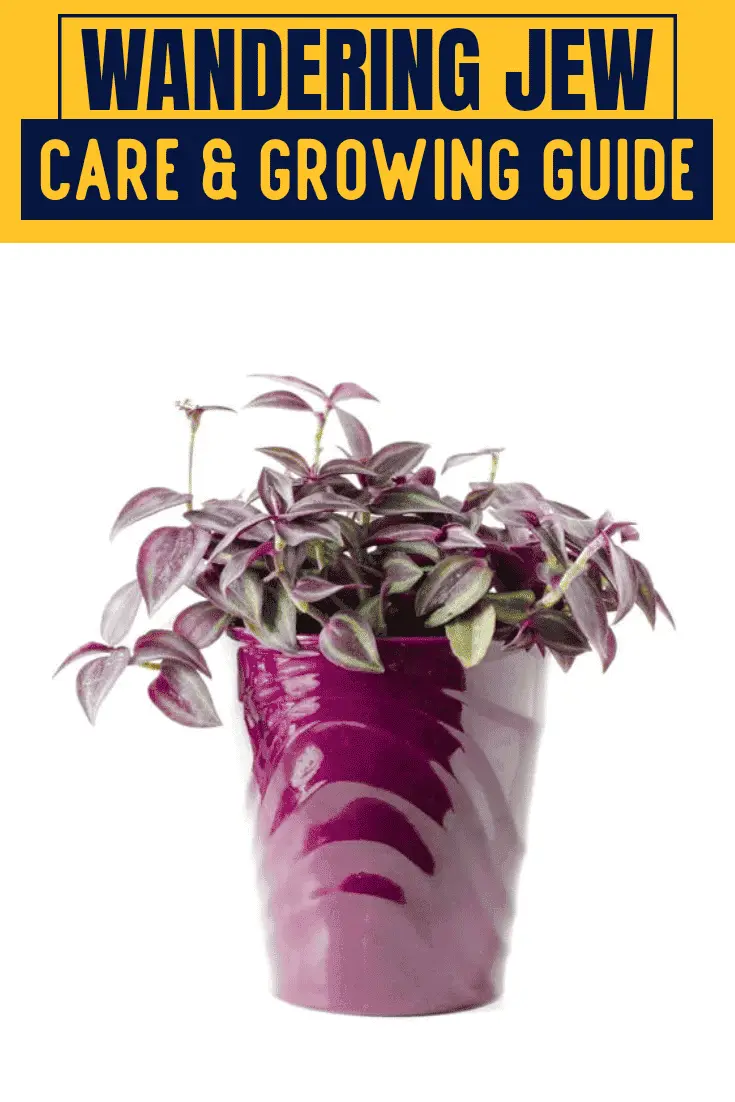The Wandering Jew is a name that is used for several different species of plants in the Tradescantia genus, which includes at least 75 different species.
In times past, gardeners would share cuttings from their Wandering Jew plants with friends and neighbors so, like its name, it traveled from place to place. If you want to brighten up your home, having the Wandering Jew Plant will do just that with its colorful variegated foliage and beautiful flowers.
Wandering Jew Care & Growing Guide
1. Light Requirement
They will tolerate low light as this will help them to retain their striking colors. If it is an indoor plant, put it in a location where it will receive filtered sunlight. Outdoors, it needs to be in a spot where it is receiving partial shade or partial sun. You can also move your indoor plant outside to get this type of shade or sun.
2. Water
The soil will need to be kept moist but not soggy. If the soil starts to feel very dry, then it is time to water your plant. Just stick your finger into the soil and if the top inch feels dry, water it until the water comes from the bottom of the drain holes of your plant.
For the outdoor plants, during the spring-summer growing season, you should water your plants once a week. In the winter, during the dormancy period, you will only need to water it about once every other week. It will need to be fertilized each month during the growing season.
3. Climate
The Wandering Jew can be grown as a houseplant in any climate but outdoors it should be USDA Hardiness Zone 9-12
4. Soil
The Wandering Jew plant can grow in different soils as long as they drain well in order to prevent stem and root rot. You should make sure that you are using a lightweight soil mixture. You should not use straight potting soil as they retain too much moisture. You can also use a potting soil that has a slow-release fertilizer mixed in so you do not have to fertilize each month.

5. Temperature
The ideal indoor temperature should be between 50-85 degrees Fahrenheit. They do need some humidity for growing so if your house is not very humid, you can fill a spray bottle with water that is at room temperature and mist the plant several times a week.
6. Repotting
If you bought a Wandering Jew that is already in a planter or container, it should be okay for at least a year before it needs to be repotted. If you get root cuttings in a small four to six-inch pot, you will probably have to repot the plant into something bigger or outside so they can properly grow. In that small of a pot, it will outgrow it in a month or two.
7. Speed of Growth
It is stated that it has a fast rate of growth and will quickly spill over your hanging basket or covering your ground area. When you are starting new plants from your cuttings, it will take several weeks before you start to see new roots.
8. Height and Spread
The stems of the Wandering Jew plant grow from 6-9 inches high and 12-24 inches in spread
9. Flowers
Depending on the species, you can get pink, white, or rose-purple blooms
10. Trimming
The Wandering Jew does not need much trimming. You can pinch off the stems if you want to promote a bushier growth or control the size of the plant. Trim off any dead, damaged, or broken leave or stems throughout the year to keep it looking good. You should regularly pinch the stems back by at least twenty-five percent.
Is Wandering Jew Poisonous?
Some people may experience skin irritations when they handle the cuttings because of the sap so you may need to wear gloves when you work with the plant. If your pet chews on it, the sap can irritate their digestive system, especially a cat. If they eat or chew on the leaves, these do not normally cause a problem, just the stems with the sap.

Can Wandering Jew grow in Water?
Yes, you can take the cuttings from your trimming to start new Wandering Jew plants in water. Fill the container with three inches of water that is room temperature. Pinch off any of the leaves that will be submerged in water before you put the cutting in the container. Set it in a bright indoor location. Change the water when it becomes cloudy or every other week. When the roots are several inches long, you can repot them in a planter or outdoors.
How to get Wandering Jew to Flower?
Make sure that you give it the right soil, and moisture. Also remove any dead flowers or dead or damaged leaves. You also want to make sure it is getting the right light because the brighter the light, the more flowers it will produce.
More like this: Elephant Bush (Portulacaria Afra) Care & Growing Guide
Common Plant Diseases
Wandering Jew is prone to a variety of diseases, including:
- Stem or root rot—it is getting too much water or it is not draining properly so watch the watering and make sure that it is draining.
- Leaves losing color or drooping—not enough light so if indoors, you just have to move the plant where it will get more light.
- Sunburned foliage—too much sun so you need to put it in a less sunny location.
- Aphids, spider mites, mealybugs, or whiteflies—these are all sap-sucking insects and can quickly kill your Wandering Jew plant. If the infestation is small you can just wipe the leaves and get rid of them. You may also use an insecticidal soap with water and gently spray the plant.
Also read:
Conclusion
- This is a hardy plant that is easy to take care of, even those that fell they kill every plant they try to grow.
- They grow well outdoors in frost-free regions or in hanging baskets or planter.
- When grown outdoors, it can be used as a groundcover that grows quickly.
- The biggest problem with using Wandering Jew as a houseplant is to be able to get the moisture levels correct.

Victoria is the owner and main author of hobby plants. She loves spending her free time in her garden planting and taking care of her plants. Victoria hopes you enjoy the content here!